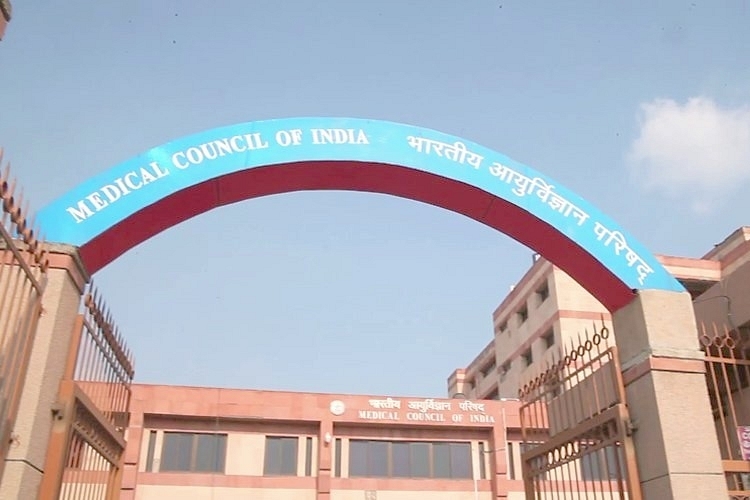Insta
Medical Colleges Can Only Give MBBS Degree If They Have A Hospital Functional For At Least Three Years

Medical Council of India (Official Website)
The governing body of medical education in India, Medical Council of India-Board of Governor (MCI-BOG) did not renew licences of 40 medical colleges on the grounds that they do not have an attached functioning hospital.
Government data shows that of the 90 colleges that got permission to operate in 2011, only 50 colleges have established hospital while the rest had kept it only on paper, reports New Indian Express.
Henceforth only those colleges with a hospital operational for at least three years would be allowed to offer MBBS degrees.
The colleges got their licences in 2011 and were allowed to function even without an attached hospital. The licences were given on an understanding that the private colleges start offering degrees first and then establish a hospital.
However, with pilling complaints from inspections which found some colleges had grossly inadequate of facilities and some only had hospitals only on paper, the government was forced to reinstate the rules it relaxed.
An official from the board speaking on conditions of anonymity said, “We had been writing to the government saying that the MBBS students need quality clinical teaching, and therefore only well-established medical institutions should be permitted to run colleges, but the government’s contention was that in order to have more MBBS seats on offer every year, some rules would be required to be eased”.
The new norms introduced by the governing body mandates that any medical college with 100 MBBS seats should have at least 300-bed hospital attached to it. This move can be seen to accommodate the new MBBS syllabus which requires students to have hands-on practice in clinical and behavioural training and practice in treating patients.
Introducing ElectionsHQ + 50 Ground Reports Project
The 2024 elections might seem easy to guess, but there are some important questions that shouldn't be missed.
Do freebies still sway voters? Do people prioritise infrastructure when voting? How will Punjab vote?
The answers to these questions provide great insights into where we, as a country, are headed in the years to come.
Swarajya is starting a project with an aim to do 50 solid ground stories and a smart commentary service on WhatsApp, a one-of-a-kind. We'd love your support during this election season.
Click below to contribute.
Latest